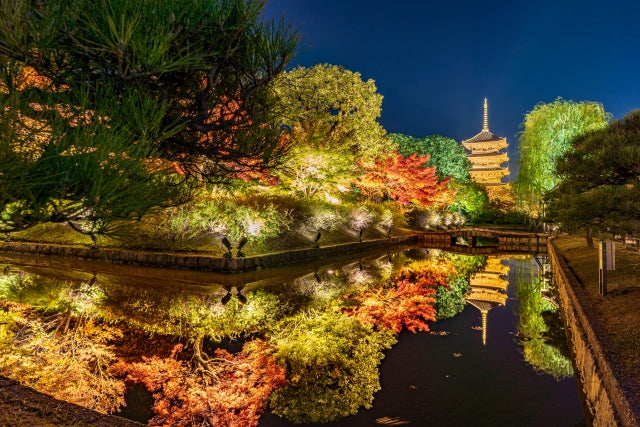Kyoto's Autumn Palette: Nature's Masterpiece

Japanese autumn foliage is considered one of the most beautiful in the world, and during the autumn season, many foreign tourists visit Japan. Japan is home to 26 different deciduous trees that change color and offer a wide variety of vibrant colors. The striking beauty of the autumn leaves, often complemented by Japan's temples and shrines, captivates numerous tourists.
I know this is what you really want to know is when....

According to the "Weather News" (https://weathernews.jp/) announcement on September 7, 2023, the estimated peak viewing times for autumn foliage in the Kansai region are in the mountainous areas, the peak foliage viewing is expected to be from early November to early December, while in the plains, it is anticipated to be from late November to mid-December.
Recommended three temples to visit during the autumn foliage season
Konkai-Komyoji Temple (金戒光明寺)

Konkai-Komyoji Temple (金戒光明寺) located in the Okazaki area, home to the Kyoto Handicraft Center, is renowned for its natural surroundings, attracting a multitude of visitors. Affectionately known as "Kurodani-san,"(くろ谷さん) this temple is highly recommended. During the autumn foliage season, it is illuminated at night, offering a stunning view of Kyoto city from the temple premises.
The most powerful, recognized, and legendary afro hair in Kyoto

Such Amida Buddha statues are a rarity, with only about 16 known to exist nationwide. In particular, Amida Buddha at Konkai-Komyoji Temple, is one of the few carved from stone.
Kitano Tenmangu Shrine (北野天満宮)


Kitano Tenmangu (北野天満宮) is the head shrine for approximately 12,000 Tenmangu shrines nationwide, and it enshrines Sugawara no Michizane, (845–903) a scholar and statesman who made his name serving the court in Kyoto. It has been traditionally known as "Tenjin-san" and is widely revered for various purposes such as success in entrance exams, academic achievement, cultural and artistic pursuits, and protection from misfortune and disasters.
Try your luck

The stone lantern has an image of Daikoku-sama, one of the Seven Lucky Gods of Japan (Shichifukujin 七福神), and is associated with wealth, prosperity, and good fortune. It is said that if you place a small stone in Daikoku-sama's mouth, and it doesn't fall, you can put that stone in your wallet to ensure you won't face financial difficulties.
To-ji Temple (東寺)

To-ji Temple (東寺) has served as the central hub for the Shingon sect of Japanese Buddhism. Despite suffering damage from earthquakes and fires,
the main structures have been reconstructed to preserve their original design and architectural styles.
Pond called "Hyōtan Ike", Gourd shaped Pond ( 瓢箪池)

In the Edo-era (1603-1867) Kyoto, a strong wind caused the five-story pagoda to tilt southward. Fixing it seemed like a major task—dismantling and rebuilding due to its immense size. But they had a different idea: what if they dug a hole on the opposite side of the lean? When they dug a large hole on the north side, the pagoda miraculously straightened itself, avoiding reconstruction.
Now, whether you believe this story or not, if this method could be used to straighten a leaning structure as massive as the five-story pagoda, then perhaps the Leaning Tower of Pisa could be straightened as well?

